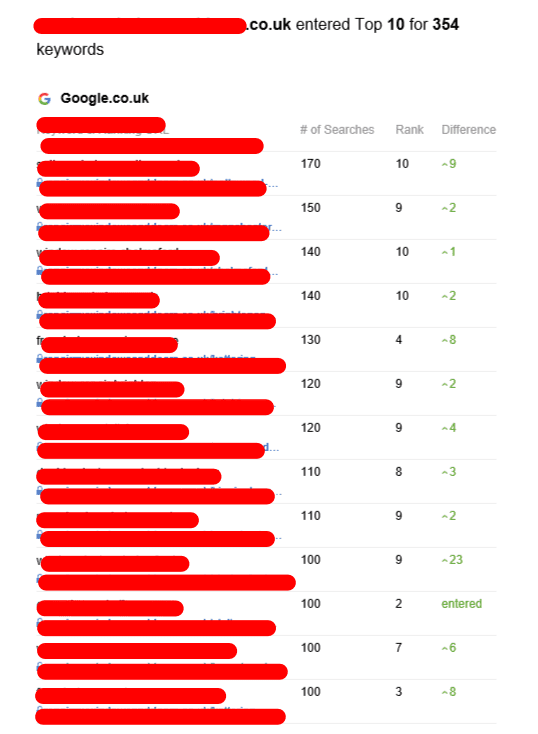Tiered Link Building - How to Avoid a Google Penalty
Tiered link building is a potent tool to help websites increase their rankings in search engines. However it is important to use it properly. It could lead to an Google penalty if not done correctly.
Tiered link building involves using multiple levels of backlinks in order to increase the rank of a web page. Many SEO experts and link-building companies employ this technique.
First-tier links
Tiered link development can be a powerful SEO technique that can increase your search engine rankings. But, it's crucial to learn how to utilize tiered links effectively to avoid penalties from Google. You can achieve this by using tiers within your backlink pyramid. It is also possible to employ other SEO tactics, such as niche editing and broken link building.

In a tiered approach, the first tier should comprise of links from high-quality sites that have higher PageRank as well as domain authority than yours. This gives you a better chance of ranking in the long run. Links from poor quality websites can affect your rankings and raise red warnings. Avoid linking to tiered link building strategy or those that have only links.
You can also build your first stage by using wikis and forum comments with a large amount of user-generated content. This is a great method to get high-quality, contextual and relevant links. However, it is important to keep in mind that these kinds of hyperlinks may not carry the same amount of link juice those from a quality website.
You can also use a tool such as HARO to discover what subjects journalists are interested in. This can be a great way to build your first link tier naturally, without breaking any rules. Be sure to only link to sites that are authoritative and relevant to your business.
Second-tier links
SEO agencies and owners of websites employ tier link building to improve their search engine rankings. It's a risky strategy that could result in Google penalties. Tiered links are essentially backlinks from third-party websites that give authority to your website. These backlinks serve to pass link equity to your primary website pages, and they can help you rank higher in SERPs. This is a time-consuming process and expensive. In addition, it can be difficult to achieve a tipping point the search engine rankings.
Tier two links tend to be less effective than the first one, but can still help boost organic ranking and help build authority for the domain. In addition, they could make Tier 1 backlinks more effective by reinforcing their value. Tier 2 backlinks can be either dofollow or dofollow, however dofollow is the one with the highest importance.
There are numerous ways to create Tier 2 links, such as guest posting and citations within niche-specific articles. In addition to that, you can use link roundups and article directories to create these links. No matter which method you select, it is essential to ensure that the URLs used to link to are relevant to your context. Additionally, you should avoid using low-quality backlinks, which can be interpreted as spam by Google. Such techniques can quickly turn into a black-hat technique which could be penalized.
Third-tier links
Link building using the tier system can be a powerful SEO tool that can assist in helping rank websites in results pages of search engines. However, it could also be risky if used improperly. If Google finds that you are using tiered linking, it could penalize your website or remove it completely from its search engine. Fortunately, there are ways to avoid this fate.
The third level is where things begin to get a little messy. Marketers employ third-party tools in order to build backlinks on a large scale. These can include blog comments directories with poor quality and bookmark websites, wikis and other content created by users. The goal of these backlinks is boosting the authority and PageRank of your first-tier links.
They can be traced back to the original source, which makes them a bit more risky than natural counterparts. They're also not as effective at boosting PageRank. Google's algorithm has become more sophisticated and low-quality (even nofollow) links are becoming less valuable.
Marketers should be careful when creating links for third-party services to avoid problems. They should only use third-party providers that have a proven track record. It is also recommended to avoid automated tools, since they can cause problems. Google may punish you if it discovers automated tools. This could affect your rankings. This is the reason it's recommended to partner with an SEO agency with experience with tiered link development.
Fourth-tier links
Tiered link building is a strategy that consists of creating an encircling of links. This technique helps to pass link juice from high-authority websites to lesser-authority websites, which can then rank for certain keywords. This method can be very effective in increasing website traffic and rankings over time. It is crucial to keep in mind that using tiered links on your entire website or on a single page is risky.
To avoid this, ensure that your tier-2 backlinks originate from multiple sources. If your tier-2 backlinks originate all from one source, Google may detect it and penalize your website. It is also essential to avoid linking to sites that are spammy because this can harm your website's reputation.
In addition to guest blogging, tier 2 links can be obtained through paid advertising or by submitting quality content to high-authority websites. You can also submit your article to HARO. This service sends out emails to journalists about a range of subjects, and you can provide the information they require for their article.
However this method of building links is not a long-term strategy. Google's algorithms are continuously updated, and it is becoming increasingly difficult to make links from poor quality sources. Search engines are also better in recognizing links that are automated. In the end, it is likely that tiered link building will ultimately disappear.
